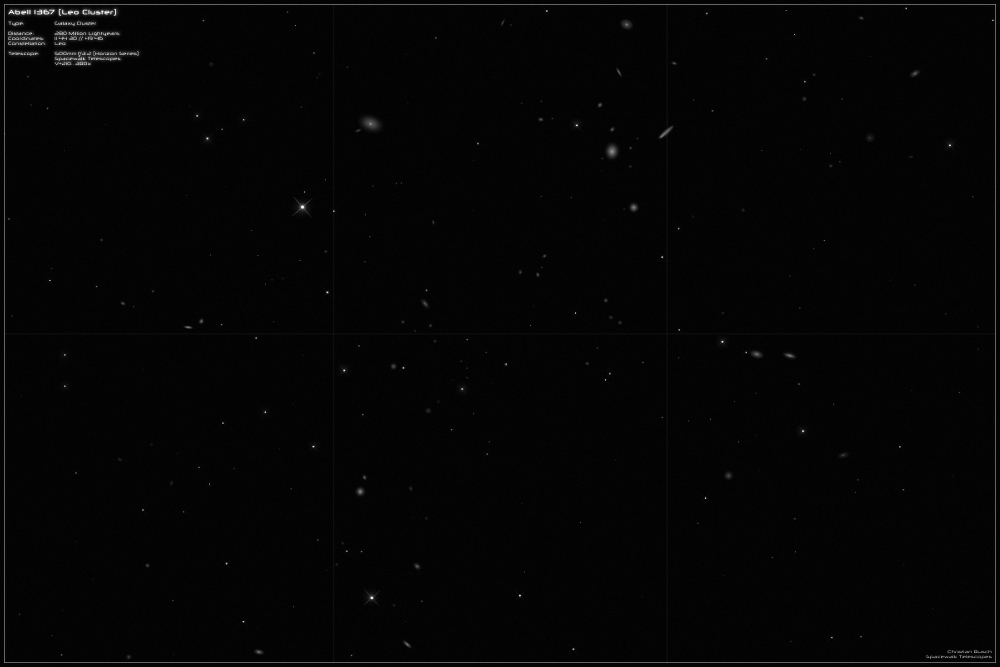Abell 1367 (Leo Cluster)
The galaxy cluster "Abell 1367" is located in the constellation Leo and is therefore also known as the "Leo Cluster". It is approximately 320 million
light-years away from Earth and, together with the "Coma Cluster" and the "Virgo Cluster" (to which it is connected via two large filaments), belongs
to the so-called "Coma Supercluster", which in turn is part of the "CfA2 Great Wall".
A total of over 500 galaxies are counted in the "Leo Cluster", of which almost 170 are located within a radius of only 1° around the brightest galaxy
NGC 3842. In contrast to many other galaxy clusters, Abell 1367 contains a large number of spiral galaxies. There is also no particularly high
concentration of galaxies towards the center, making the "Leo Cluster" relatively young and dynamic.
The brightest galaxy in the cluster is NGC 3842, which was discovered by F.W. Herschel in April 1785. It is an elliptical Hubble Type E3 galaxy with
a diameter of 115,000 light-years, in the center a supermassive black hole with a mass of 9.7 billion suns is suspected. Another very beautiful galaxy
in the field is NGC 3861, a barred spiral with a diameter of 150,000 light-years. As its distance is given as 225 million light-years, it appears to be
closer to us than Abell 1367 - so it is probably not a member of the cluster.
----------------------------------------------------------------------------------------------------------------------------------------------
In my 20" f/3 Dobsonian, "Abell 1367" offers a great view. Of course, you can't fit all the galaxies into the eyepiece at the same time, so you have to
slowly scan the cluster at high magnifications to be able to see all the galaxies. A star chart or a DSS printout, on which the very faint galaxies are
also noted, can help with this. And so you can easily spend 2-3 hours looking for galaxies without getting bored.
The field around NGC 3842 is particularly beautiful because several galaxies can be seen in the eyepiece at once. At 270x, NGC 3842 is a very bright
and attractive elliptical galaxy with a bright stellar core. To the west of it lies UGC 6697, a beautiful edge-on galaxy where the bright center seems to
have slipped slightly off center and could indicate an interaction.
The barred spiral NGC 3861 mentioned above is also very nice to look at, but unfortunately showed no details such as spiral arms. Only a brighter
core area was visible.
(For the full resolution please click on the drawing!)

